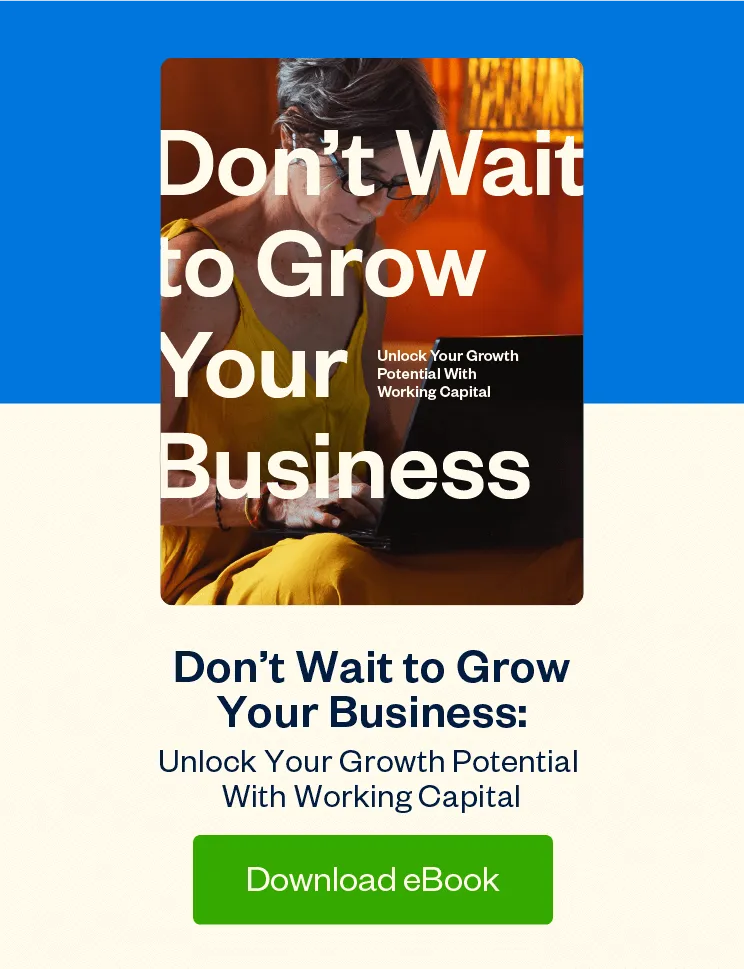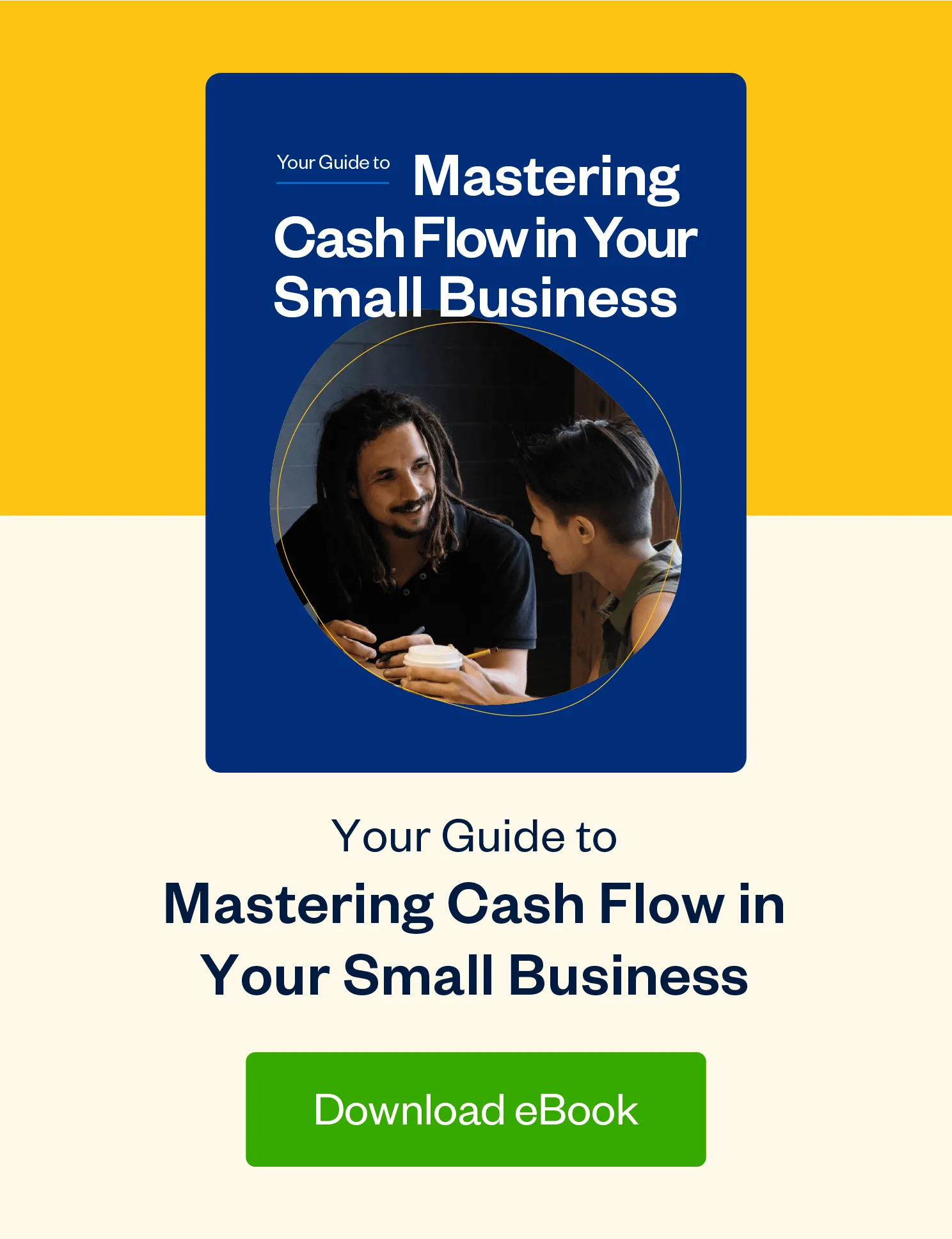Crowdfunding, crowdlending, crowdinvesting—what's the difference, and which is right for you? Here’s a rundown of the types of crowdfunding (and the best platforms for each).

It sounds like a dream: You ask for funding online for your business, and the money pours in. With crowdfunding, that’s precisely what happens—many people make small contributions that, when added together, give your business a cash injection.
But that’s not how it always plays out. Crowdfunding has grown into a $16.2 billion industry, and raising money online has become more competitive. Unfortunately, not every business that tries crowdfunding will succeed.
Typically, the ones that succeed with crowdfunding really understand how it works—including the different types and which offer the best opportunity for their business.
But what, exactly, are the different types of crowdfunding? What are the pros and cons of each? And how do you determine which type (and, from there, which crowdfunding platform) is best suited to help you raise cash?
Let’s take a deep dive into crowdfunding: The 5 types, the benefits and drawbacks for small business owners, and the best platforms to help you reach your crowdfunding goals.
Table of Contents
What Is Crowdfunding?
Before we jump into the different ways to crowdfund, let’s quickly touch on exactly what crowdfunding is.
As the name suggests, crowdfunding is when a group of investors comes together to fund a business and/or project. In other words, they put the “crowd” in crowdfunding!
For example, a business must raise $100,000 to support a new product launch. In more traditional forms of investing, they might target 1 or 2 investors to get the funding they need to launch their new product (i.e., 2 investors at $50,000 each). But with a crowdfunding campaign, the business could appeal to a much larger pool of potential investors. Even though each put in significantly lower dollar amounts, due to the higher volume of investors, the business still gets the money they need to move forward (i.e., 1,000 investors at $100 each).
What Are the 5 Types of Crowdfunding?
Now that you know what crowdfunding is, let’s jump into the different ways you can use crowdfunding to support your business.
There are 5 different forms of crowdfunding, including:
1. Rewards-Based Crowdfunding
Rewards crowdfunding is the best-known type of crowdfunding—thanks to popular rewards-based crowdfunding platforms like Kickstarter.
With the rewards crowdfunding model, a business offers investors (better known as “backers”) rewards in exchange for contributing to that business’ product or project.
What kind of rewards, you ask? It’s up to you! You might offer backers company-branded swag, advance copies of a new product, a behind-the-scenes tour of your business, or exclusive access to future events or discounts. You could also offer tiered rewards—with backers that contribute more money to your campaign getting better, higher-value rewards.
There are 2 ways rewards-based crowdfunding campaigns function:
- All or nothing. With this type of campaign, you set a specific funding goal. If you hit the goal, great! You get to keep all the money you raised. But if you fall short—even by a small amount? You don’t get a single dollar.
- Flexible. With a flexible campaign, you might have a funding goal in mind, but that doesn’t impact whether or not you get to keep contributions. Instead, you get to keep whatever you raise from backers—whether that’s $10 or $100,000.
2. Equity Crowdfunding (a.k.a. Crowdinvesting)
In equity-based crowdfunding, you don’t hand out rewards. Instead, investors acquire a small ownership stake in your business. Essentially, this is angel investing—just mass-produced online.
And equity crowdfunding is booming. Statista forecasts crowdinvesting will put $31.3 billion in entrepreneurs’ pockets in 2022 alone, up from $11.2 billion.
With equity crowdfunding, deals can be structured in several ways. For example, your business might issue private shares of stock—or debt as a convertible note. You pay off equity investors when your startup has an ‘exit’ event—like your company gets acquired, raises more money, or holds an initial public offering (IPO).
If your company already has revenue coming in, you can do an equity deal based on revenue share. In this format, you pay back investors out of sales income, paying a hefty interest rate. The plus side of that kind of deal? You retain full ownership—and don’t actually hand over any ownership stake in your business to investors.
3. Donation Crowdfunding
Donation-based crowdfunding is a model where investors donate money to organizations they want to support—no strings attached. In other words, investors donate to the company without any expectation of getting anything in exchange for their donation.
Donation crowdfunding is a popular option for any type of business to which people genuinely want to donate money. This includes non-profits, mission-based organizations, and small businesses with strong ties to their communities.
4. Debt Crowdfunding (a.k.a. Peer-To-Peer Lending or Crowdlending)
Crowdlending (also known as debt crowdfunding or peer-to-peer lending) is simple: Instead of going to a traditional bank for a business loan, you get a loan online from many individuals. It’s structured similarly to conventional lending practices—just instead of the bank being the lender, the lender is a group of individuals.
Since this is a form of lending, investors expect to get their money back—with interest. You’ll need a good credit score to qualify. Crowdlending is a great way to raise quick cash for your business if you have solid credit and a strategy that appeals to potential lenders (a heartwarming story never hurts!).
5. Royalty Crowdfunding
If rewards-based crowdfunding is the best-known form of crowdfunding, royalty crowdfunding is arguably the least. With royalty crowdfunding, backers invest in a project or company. Then, once that project and/or company generates revenue, all backers get a percentage of that revenue.
For example, let’s say you want to use crowdfunding to develop and launch a new software product. With royalty crowdfunding, backers would invest. You would then use their money to build and release the software. Once the software brings in revenue, you would give a percentage of that revenue back to the investors who backed your product.
Royalty crowdfunding is excellent if you need cash to fund a project in its early stages—mainly if you can get people to believe in the product, service, or business you’re developing (and, more specifically, its potential for profit). But it can be harder to get backers since there’s no guarantee on their investment (if your product never generates revenue, they never see their royalties).
Pros of Crowdfunding
Crowdfunding offers a variety of benefits to business owners, including:
Rewards-Based Crowdfunding Pros
- A high-profile win can generate positive buzz for your company. For example, just check out the nearly $700,000 raised and raves for the LIMBO gyro-top on Kickstarter. (They’ve since gone on to raise even more on Indiegogo!)
- It can also be a great way to do market research, get feedback on new products, raise your profile, and build bonds with fans and supporters.
Equity Crowdfunding (a.k.a. Crowdinvesting) Pros
- It can connect you with legitimate investors with the expertise you need to help your business grow.
- You can get money for general business purposes (like working capital) rather than funding to support a specific product or project.
- It’s relatively rare compared to rewards-based crowdfunding—so if you’re successful, it could help you get media exposure for your company.
- You can raise a LOT of money in equity crowdfunding. Some companies have raised multi-millions.
Donation Crowdfunding Pros
- You don’t have to provide rewards, equity, royalties, or take on debt to get the funding you need. Donations come in, and you collect them—it’s that simple.
Debt Crowdfunding Pros
- It’s the fastest crowdfunding method, with approvals available in a day (or sometimes even faster!). If you need cash in hand quickly, this can be a much better option than the red tape and strict requirements you’re likely to face with traditional banks—or the months of prep needed for rewards and equity crowdfunding.
- Similar to equity-based models, with debt crowdfunding, you can get a loan for working capital rather than choosing a specific product or project.
Royalty Crowdfunding Pros
- You don’t pay backers anything until your product starts making money.
Cons of Crowdfunding
Crowdfunding can be a fantastic way to raise money for your business. But it’s not without its drawbacks! Some potential downsides include:
Rewards-Based Crowdfunding Cons
- Not all campaigns succeed—and having a failed attempt can make it harder to raise funds from backers in the future.
- It demands a built-in audience of raving fans ready to back your project—or a clear strategy for connecting with and building that fanbase.
- You’ll have substantial up-front costs creating video collateral and other marketing materials to promote your crowdfunding campaign.
- It usually takes 3 to 6 months to prep and run a campaign. So, if you need funding quickly, this isn’t the ideal option.
Equity Crowdfunding (a.k.a. Crowdinvesting) Cons
- It’s not a quick process. You should expect it to take, at minimum, anywhere from 6 months to a year to get funds from an equity crowdfunding site.
- Rules for equity crowdfunding online are complex—and all the legal paperwork makes this a costly route.
- You’ll need investor connections to get this rolling.
- Most deals involve giving up an ownership stake in your company—which may not be ideal as your company grows.
- Many startups and small businesses won’t meet equity investors’ high standards and requirements, making it harder to get funding.
Donation Crowdfunding Cons
- People only want to donate money for certain reasons (e.g., for charity or to fund a project that will benefit the community). If you’re looking for funding to launch a new product or grow your business, this probably isn’t the right method for you.
Debt Crowdfunding (a.k.a. Crowdlending) Cons
- Interest rates can be high—and if you don’t have good credit, those rates can go from “high” to “sky-high.”
- Debt-based crowdfunding generally offers personal loans instead of business loans. So, if you fail to repay, it could hurt your personal credit score.
- Most larger debt-based crowdfunding sites only allow registered investors to view loan requests. Typically, there’s no visibility into which loan requests get picked up, so it can be hard to know how to create a campaign that appeals to investors.
Royalty Crowdfunding Cons
- It can be harder to secure the required funding since this form of crowdfunding feels like a gamble to backers. (Again, if your product, service, or company doesn’t make money, neither do they.)
- It’s the least known type, so there isn’t as large an investor pool as other methods.
The Top 3 Crowdfunding Websites
Now that you understand the 5 ways to crowdfund, you might wonder what the best crowdfunding sites are. To help, we’ve curated a list of the 3 most popular crowdfunding websites to consider for future funding projects:
1. Kickstarter
You can’t talk about crowdfunding without talking about Kickstarter. Arguably the world’s most popular crowdfunding site on the internet, Kickstarter connects creators with backers to bring visions to life. The company has helped millions of people (including small business owners!) raise over $6.7 billion, and, to date, the platform has successfully funded over 225,000 projects. Keep in mind that Kickstarter is an all-or-nothing crowdfunding platform—which means you have to meet the fundraising goal you set within the allotted time frame, or all of your backers get their money back (and you walk away with nothing).
You can create a project campaign on Kickstarter free of cost—but if your campaign is successfully funded, you’ll pay a 5% fee on any collected funds. The platform also charges processing fees ranging from 3% to 5%.
2. Indiegogo
Almost as well-known as Kickstarter, Indiegogo is another extremely popular platform that offers live crowdfunding campaigns and hosts a marketplace for innovative, cutting-edge products. This is the best place to start if you’re looking to fund a new product. Indiegogo has helped innovators, entrepreneurs, startups, and small business owners raise over $1 billion across more than 800,000 projects. And unlike Kickstarter, Indiegogo offers flexible funding campaigns. That means there are no fundraising targets or deadlines; you collect whatever you raise in however long it takes to raise it.
In terms of fees, Indiegogo charges 5% in platform fees across all projects.
3. Fundable
Fundable is a successful crowdfunding platform specifically designed to help startups and small businesses raise capital—and it’s working. To date, the platform has helped organizers raise over $568 million in pledged funds.
Consumer-facing companies can raise up to $50,000 with the platform’s rewards-centric crowdfunding program, which includes taking pre-orders for as-yet-to-be-launched products and selling merchandise. Fundable also offers an equity crowdfunding platform, which allows companies to raise anywhere between $50,000 to $10 million from accredited investors to support their product, service, or business. (It’s worth noting that equity-based crowdfunding through Fundable is only offered to B2B-based companies.)
If you want to raise money through Fundable, you’ll need to pay a monthly subscription fee, which starts at $179 per month). There’s also an additional processing fee of 3.5% + $.30 per transaction for rewards crowdfunding campaigns.
Best Platforms for Each Type of Crowdfunding
Now that you know some of the most popular crowdfunding platforms out there, let’s jump into the different crowdfunding sites you may want to explore based on the type of crowdfunding you’re going to pursue for your business:
Best Rewards-Based Crowdfunding Platforms
Patreon
If you’re in the business of creating content, Patreon can be an incredible resource for crowdfunding. Patreon helps content creators of all sorts—including artists, musicians, writers, podcasters, and small business owners—raise funds by offering their fans rewards in the form of exclusive membership opportunities.
With Patreon, fans pay a monthly subscription fee to access exclusive experiences and content (for example, extra podcast episodes, creator Q & As, or early access to merchandise sales). Those fees then go straight to the creator. Currently, the platform boasts 8 million active monthly backers (known as “patrons”—and, to date, approximately $3.5 billion has been paid out to the more than a quarter-million creators on the platform.
Depending on your plan, expect to pay fees of between 5% and 12%, as well as additional process fees (which fall between 2.9% and 5%).
Crowdfunder
Is your business based in the UK? Then you’ll want to consider Crowdfunder. While the platform supports a few different crowdfunding methods (including donation-based crowdfunding for non-profits), it’s best known for its rewards-based options for small businesses. With over 1 million active supporters, the platform has raised over £250 million to support more than 300,000 projects.
As a business owner, expect to pay a 5% platform fee, plus 2.4% in transaction and processing fees.
Best Equity Crowdfunding (a.k.a. Crowdinvesting) Platforms
SeedInvest
SeedInvest is a go-to platform for startups that want to run equity-based crowdfunding campaigns. It has nearly 700,000 investors to date and has raised more than $465 million.
There are a few things to note about SeedInvest. Like all equity-based platforms, the process for getting funding is lengthy. Once you’ve filled out an application, there’s a screening and due diligence process that takes at least 60 days (although, depending on the circumstances, it could take longer). SeedInvest also charges various fees—including a 7.5% placement fee on the total amount raised, a 5% convertible note or equity fee, and up to $10,000 to cover administrative and legal expenses.
EquityNet
EquityNet is another popular equity-based crowdfunding platform designed to help entrepreneurs and business owners raise capital—anywhere between $100,000 and $100 million. How do they do that? Their vast network of over 20,000 accredited investors has helped over 1,000 companies raise over $600 million in capital.
One of the main perks of using EquityNet over other equity-based platforms is that they have a much higher acceptance rate. EquityNet accepts any legal and ethical companies to their platform—which is in stark contrast to their competitors, who they claim accept less than 5% of applicants.
EquityNet also offers a unique pricing structure. Instead of charging a percentage of funds raised, EquityNet charges organizers a monthly subscription fee, which ranges from $299 per month to $2,990 per month.
Best Donation Crowdfunding Platforms
StartSomeGood
If you’re looking to use crowdfunding to grow or support a socially conscious business—or, in other words, a company that aims to do good in the world? Then StartSomeGood may be an option to explore.
StartSomeGood is a donation-based crowdfunding platform that supports 2 ways to crowdfund: One-off crowdfunding for one-time projects and recurring crowdfunding, which allows users to generate ongoing funds as they pursue projects over the long term.
In terms of costs, StartSomeGood charges a 5% service fee on all processed pledges.
FundRazr
Looking to raise funds for employee and workplace programs? Try FundRazr. This platform, which is focused on social fundraising, has a reputation for being straightforward and easy-to-use. So, if you have concerns about the technical side of donation-based crowdfunding, this is a good option. They also offer a suite of tools (including integrations with social media platforms and popular CRMs) to help you make the most out of your fundraising campaigns.
For fees, expect to pay platform fees that range between 0% and 5%. You’ll also be on the hook for third-party payment processing fees (currently, FundRazr offers payment processing through Stripe and PayPal).
Best Debt Crowdfunding (a.k.a. Crowdlending) Platforms
LendingClub
LendingClub connects business owners with a network of investors to fund their businesses. Applicants can apply for business loans of up to $500,000. Once they’ve gone through the screening program, LendingClub connects the borrowers to their investor network. With LendingClub, business owners get their funds upfront—and then pay back like they would with a traditional loan.
LendingClub has strict restrictions on what business owners can apply for a loan (including being based in the U.S., being in business for a year or more, and generating at least $50,000 in annual sales). They also charge a variety of fees, including an origination fee (between 3.49% and 7.49%) and a monthly payment per $10,000 borrowed (between $227 and $1,781).
Prosper
Prosper is a peer-to-peer lending marketplace that provides personal loans between $2,000 and $40,000. Launched in 2005, it was the first crowdlending platform on the market—and, to date, has granted more than $21 billion in loans to over 1.3 million people. Terms for personal loans range from 3 to 5 years, and fees and interest rates vary.
One thing to note is that Prosper only grants personal loans, not business loans—so, depending on what you’re planning to use the money for, it may not be the right fit.
Best Royalty Crowdfunding Platforms
Currently, there aren’t any crowdfunding platforms explicitly designed for royalty crowdfunding (this type of crowdfunding is still getting off the ground!). However, some crowdfunding platforms (including Indiegogo) offer revenue-sharing options.
Tips for a Successful Crowdfunding Campaign
Need some tips on using crowdfunding to raise the money you need to move your business forward? Here are some tips on how to run successful crowdfunding campaigns:
- Use the right platform. As previously mentioned, different crowdfunding sites offer different types of crowdfunding and cater to different kinds of organizers and backers. If you want to run a successful campaign, do your research and choose the platform most aligned with your business venture and crowdfunding goals.
- Design your campaign in a way that appeals to your audience. The success of your campaign depends on whether it appeals to investors. When designing your campaign, think of who you’re trying to target—and then create the campaign with them in mind. For example, when running rewards campaigns, offer rewards that you know your audience will be excited about (like branded merchandise or a chance to try a new product before it’s released to the public).
- Set realistic goals. If you’re using an all-or-nothing platform, set realistic fundraising goals. If you place your goal too high and miss your target, you lose out on all your funding. So, set a goal you think you can realistically hit in the time frame you’ve earmarked to raise money.
- Market your crowdfunding campaign. The more potential investors that see your campaign, the more likely you are to generate interest—so get your campaign out into the world! Market your campaign in as many ways as possible (e.g., by sharing on your social media channels or doing a media blitz).
- Keep your backers in the loop. For backers, one of the best parts of crowdfunding is feeling like they’re a part of bringing an exciting venture to life. Make them feel like they are a part of what you’re doing! As your crowdfunding campaign progresses, share regular updates and keep them in the loop on what’s happening. For example, if you’re crowdfunding to support a new product, you might share regular videos of how the product is developing.
Don’t Forget—You Still Need to Pay Taxes on Crowdfunded Income
One (very important!) thing to keep in mind: Crowdfunding isn’t free. As a business owner, you still need to pay taxes on crowdfunded income. Under the Internal Revenue Service’s Information Letter 2016-0036, crowdfunding platforms must report any distributions to organizers over $20,000 or 200 transactions per year on IRS Form 1099-K. Some states have even lower thresholds for filing a 1099-K (like Massachusetts, Mississippi, and Vermont, which have a threshold of $600).
There are some exceptions to this rule. For example, when you sell equity in your company, that’s not considered taxable income. This means you can avoid paying taxes on any funds from equity-based crowdfunding. Also, depending on how you use your crowdfunding funds, you may be able to write off some (or all!) of the amount you received as business expenses, which can lower or eliminate your tax implications.
Choose the Crowdfunding Type That’s Right for You and Your Business
Crowdfunding can be a great way to help business startups get the funding they need to get off the ground. And now that you know the ins and outs of crowdfunding, the different types, and how to figure out which is right for you, all that’s left to do? Get out there and create a crowdfunding campaign to raise funds for your business venture!
This post was updated in September 2022.

Written by Deanna deBara, Freelance Contributor
Posted on September 14, 2022

 What Is Working Capital? Here’s Everything You Need to Know
What Is Working Capital? Here’s Everything You Need to Know The 5 Most Important Financial KPIs That Drive Business Strategy
The 5 Most Important Financial KPIs That Drive Business Strategy 7 Small Business Cash Flow Problems and How to Solve Them
7 Small Business Cash Flow Problems and How to Solve Them






